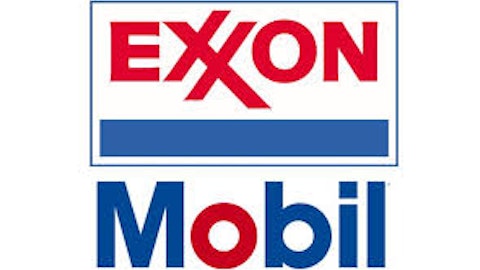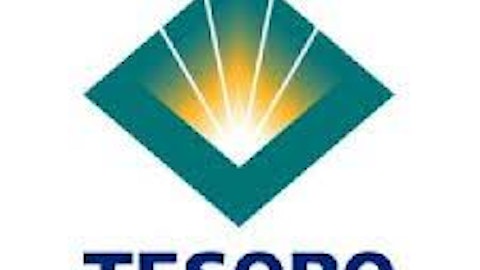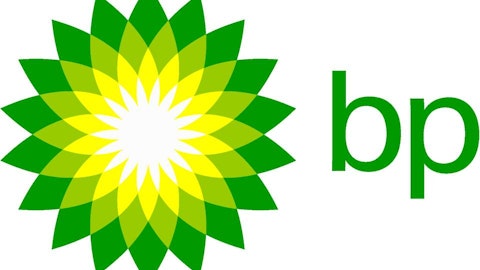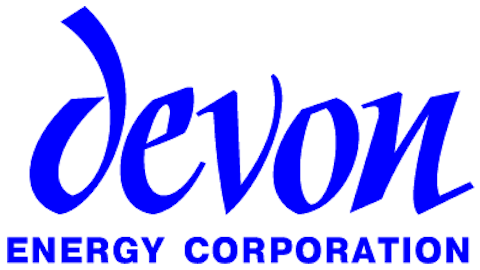Chevron Corporation (NYSE:CVX) has bucked the recent trend in the energy industry by remaining an integrated producer instead of separating upstream and downstream operations. The company’s fourth quarter results give us an opportunity to examine the success of its strategy and to see how the downstream business was able to offset the decline in the upstream business and help the company produce near record profits for 2012.

Chairman and CEO John Watson said that the upstream portfolio continues to produce excellent results, and the company has now led the industry in earnings per barrel for more than three years. The downstream businesses also produced competitive earnings per barrel. Strong cash flows allowed Chevron to invest aggressively in major projects and the acquisition of several important new resource opportunities. It has made appreciable progress on the Gorgon and Wheatstone LNG projects in Australia over the past year. At the same time, it announced six additional natural gas discoveries in offshore Australia, and concluded an asset exchange that strengthened its interests in Carnarvon Basin fields. Watson pointed out that the company added approximately 1.07 billion barrels of net oil-equivalent proved reserves in 2012, which equals 112% of net oil-equivalent production for the year.
Chevron repurchased $1.25 billion of its common stock in fourth quarter 2012 under its share repurchase program, and full year repurchases totaled $5 billion. At the end of the year, cash, cash equivalents, time deposits and marketable securities totaled $21.9 billion, which is an increase of $1.8 billion from the end of the previous year. Total debt at the end of the year stood at $12.2 billion, an increase of $2.0 billion year over year.
Chevron’s production grew to 2.67 million barrels of oil and gas per day for the quarter, up only a little from the same quarter of the previous year but a substantial increase from the 2.5 million the company produced in the preceding quarter. For the full year, the company produced an average of 2.64 million barrels per day, compared to 2.67 million barrels per day in the previous year.
Production was suspended at the company’s Brazilian offshore project (known as the Frade field). It was closed when oil was found to be seeping from the field in November 2011 and again in March 2012. The company’s production of oil and other liquid hydrocarbons in the U.S. rose 3% to 462,000 barrels per day in the quarter, though this is lower than the growth of overall U.S. production.
The Virtues of an Integrated Business Model
It was a difficult quarter for energy companies, with oil prices remaining flat and the boom in shale gas production in the U.S. keeping natural gas prices depressed. This was exacerbated with the slow recovery of the U.S. economy and the slowdown in China. Despite flat production figures and a decline in revenues, Chevron produced numbers that are ahead of profit expectations.
Upstream figures were mixed, to say the least, but the company showed surprising downstream strength from refining, which had been a cause for concern in the past, combined with asset disposals, and the chemicals business continued to prosper. The second U.S. oil company by production produced an EPS of $3.70 well in excess of the $3.03 consensus estimate, though revenue growth of 1% to $60.5 billion was disappointing compared to be consensus estimates of $63.1 billion. This is a time when the energy industry is re-examining the integrated upstream/downstream model and other big names in the industry have separated their refining businesses from the higher-margin production business. Chevron has clearly benefited from continuing with the integrated business model.
While total production rose 1.1% to 2.67 million daily barrels of oil-equivalent production, the growth was produced by natural gas, which grew 5.8%, compared with liquids, which declined 1.1%. Impressive refining margins helped the downstream business to move from a $538 million loss a year ago to downstream earnings for the fourth quarter of $925 million. Exploration and production is still the most important businesses for the company, but solid fourth quarter performances in refining and chemicals added to the near record profits at Chevron.
Other Energy Players
At Exxon Mobil Corporation (NYSE:XOM), net income jumped almost 6% to $9.95 billion, despite a decline in revenue for the fourth quarter at $115.2 billion. The world’s largest publicly traded oil company earned $2.20 a share (compared with a $1.99 a share estimate), while sales came in just above expectations. Oil-equivalent production declined by over 5% to 4.29 million barrels per day and upstream earnings declined $1.1 billion to $7.8 billion on lower price realization. On the other hand, downstream earnings more than quadrupled to $1.8 billion.
Looking ahead, ExxonMobil recently signed an agreement with Russian partner Rosneft that will give the company exploration access to 150 million additional acres in the Russian Arctic. This bodes well for Exxon’s future, as ExxonMobil can now start developing the area, called Point Thomson, containing several gas fields that ExxonMobil has owned for decades. Exxon is a promising long-term growth stock in oil and gas.
ConocoPhillips (NYSE:COP) fourth-quarter 2012 earnings came in at $1.4 billion, or $1.16 per share, compared to earnings of $3.4 billion, or $2.56 per share in the same quarter of the previous year. Fourth-quarter 2011 reported earnings included downstream results before the separation of Phillips 66 on April 30, 2012.
While the company’s full year 2012 results were modest, several promising projects remain on track. The company’s assets in the Eagle Ford and Bakken shale plays in the U.S. look promising, and the company is ramping up production elsewhere. ConocoPhillips is drilling at the Coronado and Shenandoah, and exploring deepwater regions of the Gulf of Mexico. ConocoPhillips controls 1.9 million acres in the Gulf of Mexico. Other areas of deepwater exploration include Malaysia, Indonesia, and Bangladesh. The company is also working on a coal gas project in Australia. Though ConocoPhillips remains highly vulnerable to oil and gas prices along with the other energy players, it appears to be a promising growth play based on its global footprint and strong asset base.
Valero Energy Corporation (NYSE:VLO) announced a very strong fourth quarter, with earnings growing to $1.82 per share from $0.08 per share, well ahead of the consensus estimate. This was achieved by replacing all imported crude oil with domestic crude at the refineries on the Gulf Coast and in Memphis. The company expects increasing availability of U.S. and Canadian crude and will attempt to procure higher volumes in the future.
In addition to strong fourth quarter earnings, Valero’s stock has seen positive momentum from analyst upgrades. Analysts at Macquarie recently upgraded Valero from a neutral to outperform with a price target of $53.00. Analysts at Deutsche Bank placed a hold rating on the stock with a price target on Valero shares at $51.00, up from $40.00. Valero reported revenue of $34.70 million for the fourth quarter of 2012, beating the consensus estimate of $31.01 million. Investors looking at the oil and gas sector should consider Valero as a promising long-term growth stock.
Conclusion
Chevron’s production outlook is among the best in its peer group, with significant start-ups during recent months that include the Usan project in Nigeria as well as the Caesar/Tonga project in the deepwater Gulf of Mexico. Despite this, I believe Chevron is fairly valued at current price levels.
The article Should You Buy This Integrated Energy Player? originally appeared on Fool.com and is written by Jordo Bivona.
Copyright © 1995 – 2013 The Motley Fool, LLC. All rights reserved. The Motley Fool has a disclosure policy.





